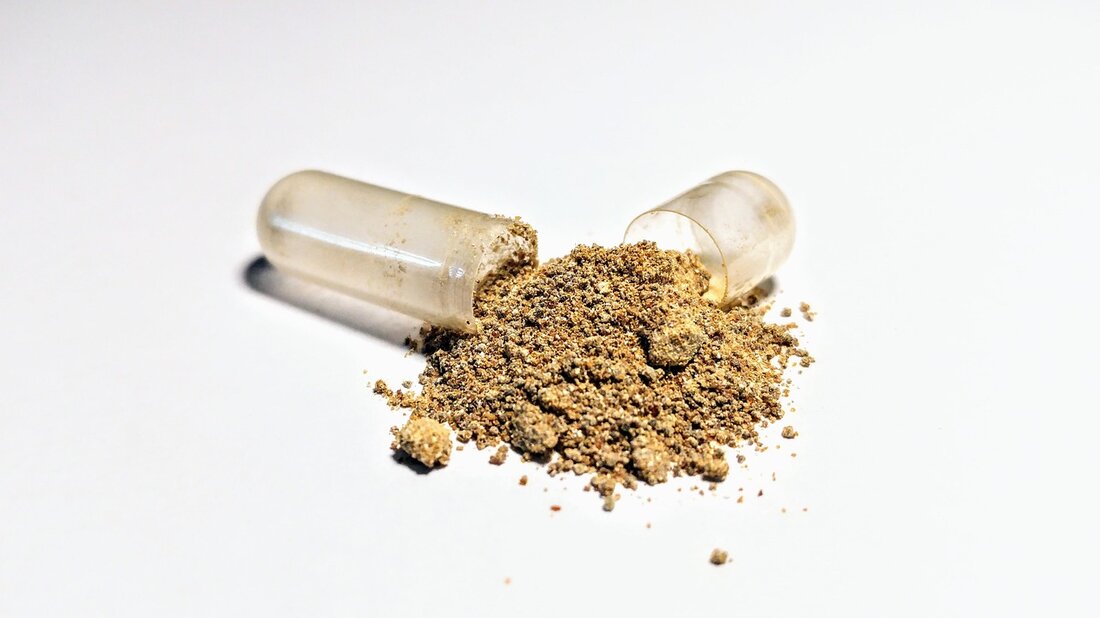Ashwagandha: miracle cure or risk? The truth about the medicinal plant!
Discover the benefits and harms of ashwagandha in our comprehensive article. Learn more about its origins, health benefits, possible risks and current research.

Ashwagandha: miracle cure or risk? The truth about the medicinal plant!
In a world characterized by stress and hectic pace, many people are looking for natural ways to bring body and mind into balance. Ashwagandha, a medicinal plant used in Ayurvedic medicine, has gained popularity worldwide in recent years. Also known as “Indian Ginseng,” this root has been used for centuries to promote well-being and vitality. Their adaptogenic properties are said to help manage stress and strengthen resilience to physical and mental stress. But as with any herbal remedy, in addition to the promising benefits, there are also aspects that require critical consideration. This article delves deep into the world of ashwagandha, examining the science and traditional uses and taking an honest look at potential risks to paint a comprehensive picture of this fascinating plant.
Introduction to Ashwagandha

Imagine a desert landscape where an inconspicuous plant thrives despite scorching heat and barren soil - a silent survivor that has held the secrets of healing for millennia. This plant, known as ashwagandha, has roots deep in human history. Botanically classified as Withania somnifera, it belongs to the nightshade family, which also includes everyday foods such as tomatoes and potatoes. The name itself, which means “smell of the horse” in Sanskrit, refers to the characteristic scent of its roots, which is considered the main source of its healing power. Originally native to the arid regions of India, the Middle East and North Africa, its cultivation has now expanded to parts of the USA and Europe to meet growing demand.
For over 3,000 years, Ashwagandha has played a central role in Ayurvedic medicine, a holistic healing system that is intended to bring body, mind and soul into harmony. In this tradition, the plant is revered as “Rasayana,” a means of rejuvenating and strengthening life energy. Their uses range from treating physical fatigue to promoting mental clarity. It is particularly valued for its adaptogenic properties, which are said to help the body adapt to stressful situations and restore internal balance. Whether as a powder extracted from the dried roots or as an ingredient in complex Ayurvedic blends, ashwagandha has been passed down through generations to promote vitality and resilience.
The active components, especially the so-called withanolides, are the focus of scientific research on this plant. In addition to alkaloids, steroids and flavonoids, these compounds contribute to the diverse effects attributed to ashwagandha. In Ayurvedic practice, it has traditionally been used to support the immune system by stimulating the production of white blood cells or to improve sleep quality, which is why it is often considered a natural remedy for insomnia. Their potential ability to lower the stress hormone cortisol also made them a valuable companion in times of high stress.
Ashwagandha has now found its way into the modern wellness world beyond the borders of India. It can be found in a variety of products, from superfood blends such as Green Power or Morning Power to dietary supplements in powder or capsule form. While powder is often preferred for custom dosages and blends, capsules offer a convenient alternative that is protected from moisture. Anyone who is interested in high-quality products should pay attention to the origin and processing, as is the case with specialized providers such as Ultra Tec is emphasized that rely on quality standards and certifications. The growing popularity has also made contract manufacturing of ashwagandha products a thriving business, with companies benefiting from the expertise of specialized manufacturers.
In addition to traditional uses, the plant has also attracted attention in modern research. Their possible neuroprotective properties and support of cognitive functions are being investigated, as is their role in the regulation of thyroid hormones, particularly in hypothyroidism. Last but not least, its antioxidant properties provide another reason why it is considered a holistic alternative to pharmaceutical products. But while the list of potential benefits is long, the question remains how these traditional applications and modern insights will unfold in detail.
Positive health effects

When everyday life becomes an ordeal and the mind can't calm down because of all the thoughts, many people turn to natural helpers to find inner balance again. Among these helpers, an ancient plant stands out with an impressive range of potential effects. Ashwagandha has proven to be a promising remedy in modern research and traditional medicine, particularly when it comes to managing stress. Studies suggest that taking this root can lower blood levels of cortisol, the stress hormone that often spikes during chronic overwork. Some studies that were carried out with standardized preparations report a noticeable reduction in feelings of anxiety, which could help those affected to cope with stressful situations more calmly.
Another area where ashwagandha is attracting attention is promoting restful sleep. In a world where sleep disorders are becoming increasingly common, many are looking for gentle alternatives to prescription medications. Initial studies suggest that the plant may slightly improve both the quantity and quality of sleep. Participants in some studies reported falling asleep more quickly and experiencing fewer nighttime interruptions. This effect may be related to the calming nervous system effects attributed to ashwagandha, although the exact mechanisms are not yet fully understood.
Aside from stress and sleep, the plant also shows potential to support the immune system. It has long been used in Ayurvedic tradition to strengthen the immune system, especially in people who are prone to infections or allergies. Modern research has begun to support these observations by identifying immunomodulatory properties that may boost the production of certain immune cells. In addition, antioxidant effects are described that protect cells from harmful free radicals and thus contribute to overall health. Such properties make Ashwagandha an interesting candidate for holistic support of the body.
Beyond these core areas, there is evidence of other positive effects, ranging from supporting neurodegenerative diseases to improving fertility. Some studies, such as those on NetDoctor summarized, suggest that ashwagandha may also have heart-protective properties and may even play a role in regulating blood sugar levels. In addition, initial promising results have been observed in relieving menopausal symptoms and combating certain pathogens, underlining the versatility of this plant.
Last but not least, Ashwagandha has also made a name for itself in the area of physical performance. One specific study showed significant improvements in muscle strength, endurance and recovery times in people who regularly took supplements. Such results could be of particular interest to athletes or people with high physical stress. However, despite these encouraging reports, a critical point remains: many of the studies are still at an early stage, and the variability of the preparations used makes it difficult to uniformly assess effectiveness. Larger, well-controlled research is needed to confirm the true scope of the benefits and to understand how they translate into practice.
Possible side effects and risks

Behind the facade of natural healing powers there are often hidden risks that should not be overlooked. While Ashwagandha is considered by many to be a miracle cure for stress and fatigue, experts urge caution as the plant is not free from potential dangers. In recent years, the Federal Institute for Risk Assessment (BfR) in particular has repeatedly pointed out possible health concerns that can be associated with taking ashwagandha preparations. These warnings are aimed primarily at certain risk groups such as children, pregnant women, breastfeeding women and people with existing liver diseases, for whom consumption is completely discouraged. However, safety is not fully guaranteed even for healthy people, as the scientific data on side effects and long-term effects is still incomplete.
Commonly reported acute symptoms after ingestion include digestive problems such as nausea, vomiting or diarrhea. Some users also complain of drowsiness, headaches, dizziness or even skin rashes. More worrying, however, are reports of possible liver damage, which in individual cases have been linked to the use of ashwagandha. People with a previously damaged liver in particular could be at increased risk. The exact causes of such serious reactions are not fully understood, further adding to the uncertainty. In addition, the concentration of active ingredients in dietary supplements fluctuates greatly, which can result in unpredictable biological effects.
Another critical point concerns drug interactions. Ashwagandha can affect the immune system, blood sugar and hormone balance, and the endocrine system, which could be problematic for people taking certain medications. Experts warn of unwanted effects, particularly when antidiabetics, antihypertensives or immunosuppressants are used at the same time. The potential influence on thyroid function was also discussed by the BfR over a decade ago, as were historical reports of its use as an abortifacient, which raise further questions about safety. It is therefore strongly recommended that you consult a doctor before taking it in order to weigh up individual risks.
The legal classification of ashwagandha in the EU as a food instead of as a medicine adds to the complexity. Since no regulatory approval is required before marketing, the responsibility for safety lies with the manufacturers, while monitoring is carried out by food authorities. However, this regulation means that the quality of the products remains inconsistent, as is also highlighted in reports from the BfR Yellow list can be read. Consumers are therefore faced with the challenge of finding trustworthy providers without a uniform maximum dose or binding guidelines to provide guidance.
The discussion between traditional supporters and scientific critics is also interesting. While the Ayurveda umbrella organization Germany (ADAVED) refers to centuries of safe use and a positive monograph from the WHO, the BfR sticks to its warnings, based on more recent international assessments between 2020 and 2024. This tension between traditional knowledge and modern risk assessment shows how complex the assessment of herbal remedies can be. It therefore remains essential for consumers not to rely solely on historical applications, but to take current scientific findings and individual health requirements into account before resorting to ashwagandha.
Research and scientific findings

There is often a gap between ancient knowledge and modern science that can only be closed through careful research. With Ashwagandha, we are at an exciting crossroads where traditional applications meet the rigorous testing of empirical data. The scientific study of this plant has gained momentum in recent years, but the results paint a mixed picture. While some studies show promising effects, overall data remains limited, making a conclusive assessment of effectiveness and safety difficult. The variability of the preparations used - from dosages to extraction methods - also represents a challenge as it affects the comparability of the results.
One area that has been repeatedly studied is its effect on stress and anxiety. Some work using standardized preparations suggests that ashwagandha may lower blood cortisol levels, thereby alleviating stressful feelings. Such effects have been observed in smaller studies, with participants reporting a noticeable reduction in their feelings of stress. There is similarly encouraging evidence for sleep quality: individual studies indicate slight improvements in sleep duration and depth, which could be of interest to people with sleep disorders. But sample sizes are often small, and the mechanisms behind these effects are not yet fully understood.
Studies on physical performance also provide interesting insights. One study showed significant improvements in muscle strength, endurance and recovery times in people who regularly took ashwagandha. Such results could be particularly relevant in the context of strength training, as a recently completed randomized, placebo-controlled, double-blind study at the Ruhr University Bochum illustrates. This study, documented at DRKS00034276, examined the effects of a daily dose of 500 mg of ashwagandha extract (KSM-66®) on strength training-experienced participants over 13 weeks. In addition to maximum strength tests, stress reactions, cortisol concentrations, hormone levels and sleep quality were also measured to get a comprehensive picture of the effect.
Despite such positive approaches, many experts urge caution. The evidence to date is insufficient to consider ashwagandha a universal remedy, especially when used as a standalone agent. Larger, well-controlled human trials are needed to confirm the actual benefits and potential risks. Another aspect that is receiving attention in research is safety during long-term use. While short-term effects appear promising in some areas, data on effects over longer periods are lacking, leaving questions about tolerability and possible cumulative effects.
The discrepancy between traditional uses in Ayurvedic medicine and modern scientific standards is also reflected in the assessment of health benefits. While historical reports describe a wide range of beneficial effects - from neuroprotective to immunomodulatory properties - many of these claims have not yet been adequately supported by clinical studies. This gap between empirical knowledge and empirical evidence remains a central issue that shapes the discussion about ashwagandha and poses challenges for both consumers and scientists.
Sources
- https://volksshake.de/ashwagandha-der-natuerliche-stresskiller/
- https://www.ultra-tec.de/blog/ashwagandha-pulver-lohnherstellung-private-label-nahrungsergaenzung
- https://www.msdmanuals.com/de/heim/spezialthemen/nahrungserg%C3%A4nzungsmittel-und-vitamine/ashwagandha-schlafbeere
- https://www.netdoktor.de/heilpflanzen/ashwagandha/
- https://www.gelbe-liste.de/apotheke/sicherheitsbedenken-bfr-ashwagandha-schlafbeere
- https://www.br.de/radio/bayern1/ashwagandha-100.html
- https://drks.de/search/de/trial/DRKS00034276

 Suche
Suche
 Mein Konto
Mein Konto
